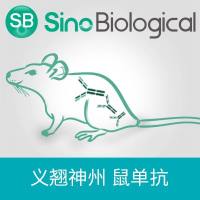A Single-Molecule Barcoding System using Nanoslits for DNA Analysis: Nanocoding
互联网
422
Single DNA molecule approaches are playing an increasingly central role in the analytical genomic sciences because single molecule techniques intrinsically provide individualized measurements of selected molecules, free from the constraints of bulk techniques, which blindly average noise and mask the presence of minor analyte components. Accordingly, a principal challenge that must be addressed by all single molecule approaches aimed at genome analysis is how to immobilize and manipulate DNA molecules for measurements that foster construction of large, biologically relevant data sets. For meeting this challenge, this chapter discusses an integrated approach for microfabricated and nanofabricated devices for the manipulation of elongated DNA molecules within nanoscale geometries. Ideally, large DNA coils stretch via nanoconfinement when channel dimensions are within tens of nanometers. Importantly, stretched, often immobilized, DNA molecules spanning hundreds of kilobase pairs are required by all analytical platforms working with large genomic substrates because imaging techniques acquire sequence information from molecules that normally exist in free solution as unrevealing random coils resembling floppy balls of yarn. However, nanoscale devices fabricated with sufficiently small dimensions fostering molecular stretching make these devices impractical because of the requirement of exotic fabrication technologies, costly materials, and poor operational efficiencies. In this chapter, such problems are addressed by discussion of a new approach to DNA presentation and analysis that establishes scaleable nanoconfinement conditions through reduction of ionic strength; stiffening DNA molecules thus enabling their arraying for analysis using easily fabricated devices that can also be mass produced. This new approach to DNA nanoconfinement is complemented by the development of a novel labeling scheme for reliable marking of individual molecules with fluorochrome labels, creating molecular barcodes, which are efficiently read using fluorescence resonance energy transfer techniques for minimizing noise from unincorporated labels. As such, our integrative approach for the realization of genomic analysis through nanoconfinement, named nanocoding, was demonstrated through the barcoding and mapping of bacterial artificial chromosomal molecules, thereby providing the basis for a high-throughput platform competent for whole genome investigations.









